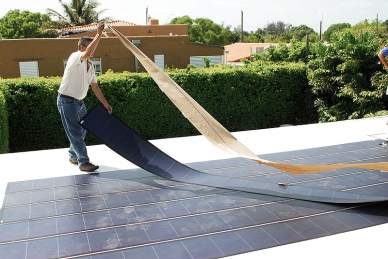Thin film solar continues to rapidly increase its efficiency level in converting sunlight to power.
And MiaSole, a leading manufacturer of copper indium gallium selenide (CIGS) thin-film photovoltaic solar panels, recently announced a jump from 14.3% efficiency – the company’s efficiency breakthrough just this September – to 15.7%.
National Renewable Energy Laboratory solar researcher Dr. Rommel Noufi lauded the significance of this achievement, calling it “a very exciting result,” as the breakthrough comes just weeks after the company’s last efficiency announcement in September.

“An almost 1.5% absolute increase in efficiency in such a short time on a continuous roll-to-roll manufacturing line is impressive,” he said, in a statement.
He goes on to note that MiaSole’s achievement significantly narrows the efficiency gap between actual manufacturing performance and solar cells produced in the laboratory – which currently demonstrate an efficiency of 20.3%.
This puts CIGS thing film technology on track to achieve the US Department of Energy’s target of $1 per Wp (peak Watts) for photovoltaic systems.

MiaSolé’s manufacturing process deposits CIGS on a flexible stainless steel substrate and produces all of the layers required for its solar cell in a single continuous process, making use of a “sputtering process” in every step of the coating.
According to the company, this process significantly reduces manufacturing time and the overall cost of production.






